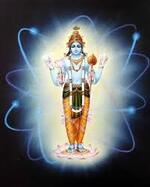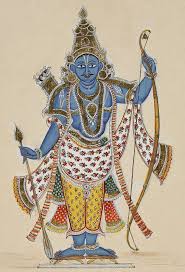Dwadasha stothra 5: Verse 5
nijapUrNa sukhAmitabOdhatanuH parashaktih ananta guNaH paramaH |
ajarAmaraNaH sakalArtiharaH kamalApati rIDyatamOvatu naH ||5||
During the times of Madhwacharyaru, there were different forms of worship of Narayana:
- Naiyayakaru used to say Narayana has only 8 gunas – Devoid of sorrow, bliss etc.
- Then vaidikaru used to say it is enough to chant Veda and not be aware of meaning behind it.
- Then there was another argument to remember Narayana with Dharma Abhava – devoid of sorrow, devoid of bliss, etc not as anandamaya. Their logic was God is devoid of all dharma. It was similar to shoonya bhava of Buddha.
Shruthi also says NirgunaBhava but prior to that it mentions all the qualities of Narayana.
एको देवः सर्वभूतेषु गूढः सर्वव्यापी सर्वभूतान्तरात्मा।
कर्माध्यक्षः सर्वभूताधिवासः साक्षी चेता केवलो निर्गुणश्च॥
There is only one God , He is hidden in every being, He pervades in the inmost Self of all beings, He presides over all work and is the home of all things living. He is the Mighty Witness who relates thought with thought, He is the Absolute and does not have any attribute.
Shastra says the whole world is built on gunas – triguna – sattva, rajas, tamas. Nirgunatva means he is devoid of these 3 gunas.
- Then there was another argument that God is not somebody else, he is everyone, and hence if you lose the concept of individuality, you are the God.
This argument is also incorrect according to above explanation. JeevaDharma has gunatreya which is not an aspect of God.
- sharIra/sharIrI (शरीर/ शरीरी) (body/indweller);prakAra/prakArI (attribute or mode/substance); shesha/sheshi (Owned/owner);amsha/amshI (part/whole);AdhAradeya/sambandha (supporter/supported);niyamya/niyanta (controlled/controller);rashksya/rakshaka (redeemed/redeemer); that is Narayana has Bhoota sharira and the body of bhakta is the residing place for Him (Ramanujacharya). This whole world is his sharira and enjoys bliss through this sharira. This argument says even Vedas say that fire is his body, sky is his body, earth is his body – archavatra – the body that God ordained just for the sole purpose that his devotees can worship.
This argument is incorrect because it means God has destruction of sharira, which is not a quality of someone who is timeless. Hence this world is his sensorium (ಅಧಿಷ್ಠಾನ) and a place of residence like jeeva has body.
To remove all these misconceptions Acharyaru gave proper way of worshipping.
nijapUrNa sukhAmitabOdhatanuH – sath chith Ananda atmaSwaroopa
nijapUrNa sukha – Natural happiness
AmitabOdha – complete knowledge
tanuH – These are his Swaroopa, he does not have panchabhootika sharira in both moola roopa and avatara roopa as Krishna says in BG,
“अवजानन्ति मां मूढा मानुषीं तनुमाश्रितम् |
परं भावमजानन्तो मम भूतमहेश्वरम् ||”
Parashakti – Omnipotent
ananta guNaH – Full of bona fide qualities, hence it also represents “atma” and “om”
paramaH – Greatest
ajarAmaraNaH – No cycle of birth and death
sakalArtiharaH – He removes all sorrow. In moksha there are 2 aspects – removal of sorrow, ignorance and bestow knowledge and felicity
kamalApati – Sripati, Lakshmi pati, he is niyamaka Shakti for Lakshmi too who is the cause for bondage.
IDyatama – worship such a God
avatu naH – may he take care of all in the world by giving them sathjnana.
He has His essential nature and body consisting of Bliss and Knowledge etc. which are unique to Him and different from those in anybody else (Vilaskhsana). His strength is beyond compare in quality and quantity. He is full of other infinite auspicious attributes. He is the greatest. He has no aging or death. He removes completely sorrow and misery from His devotees. He is the best amongst all those worthy of being prayed to. Such a God, who is also the Lord of Kamala may take care of us.



